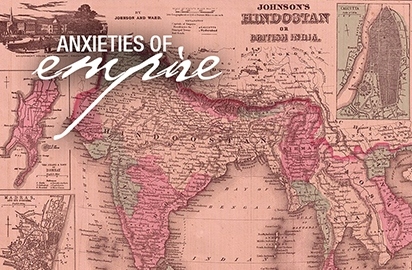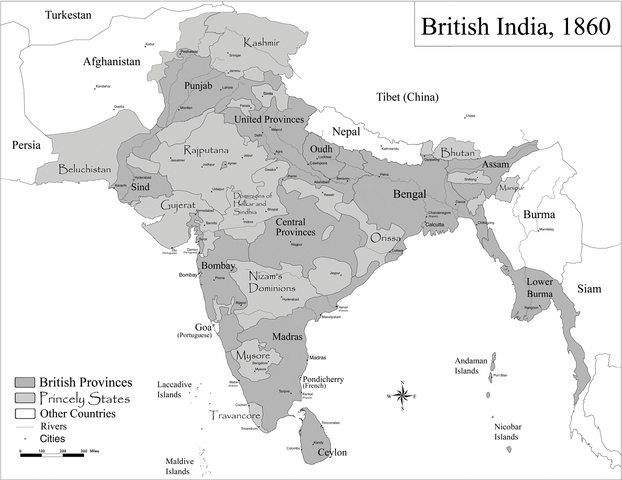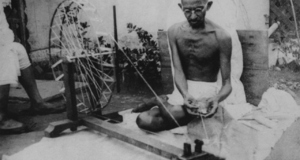In May 2012, Shakil Afridi received a sentence of thirty-three years “rigorous imprisonment” and a large fine for aiding foreign intelligence gatherers in their quest for Osama bin Laden. The Pakistani state did not charge Afridi – a doctor from the Khyber area of the Federally Administered Tribal Areas (FATA) – under the national criminal code, where they would have risked a controversial public trial and a possible death sentence. Instead, Mohammad Nasir Khan, assistant Political Agent of Bara, Khyber Agency, announced on May 23rd, 2012 that Dr. Afridi had been tried “in a secret place in Peshawar” and was convicted but had the right of appeal before the Khyber Agency Political Agent under the laws of the Frontier Crimes Regulations (FCR). In reality, the trial of Shakil Afridi was meant as a symbolic rebuff to American pressure in the midst of ongoing political estrangement with the United States; the Pakistani state sought to achieve this while avoiding the burden of regular criminal codes and legal procedure, as well as questions of civil and political rights, by utilizing the Frontier Crimes Regulations (FCR) despite this process being wholly contradictory to the principles undergirding an ostensibly democratic constitution.

This incident is one in a series of dramatic episodes which engulfed this region in the past decade. The Frontier region of Pakistan is a place which has come to stir fear and breed myth and fiction. Yet the tendency to perceive the Frontier as a place filled with mystery and marked by isolation is by no means a new one. It goes as far back as the earliest foreign encounters with this area. With the expansion of European power in the region, particularly the colonization of India by the British, the Frontier emerged as a place occupied by “savage” and “fanatic” tribesmen who were ill-suited to the sensibilities of modern political order. This paper attempts to make sense of the philosophical underpinnings, as well as the political considerations, that explain British policies in the Frontier from the time of formal annexation of the Punjab in 1849 to the creation of the new province of North West Frontier Province in 1901. The paper pays particular attention to the legal regime implemented in the Frontier, particularly the Frontier Crimes Regulations. The primary contention of this paper is that the content of this legal regime was based on, and is inextricably tied to, colonial understandings of the frontier space and the people who inhabited it. By examining the history of British engagement in the frontier, this paper challenges the notion that there was any single governing vision dominating the colonial project. On the contrary, this was a variegated, differentiated and heterogeneous venture which responded to political changes both in the colony and the center. This paper shows that the Frontier came to manifest the contradictions in the colonial project of the 19th century, simultaneously becoming the limit of imperial reach and place where colonial power was most forcefully felt.

This paper is divided into five sections. The first is an examination of the initial years of British formal control in the Frontier. This section examines how the modern idea of territorial boundaries contested traditional links among the tribes of the Frontier. Moreover it discusses the different policy measures and Frontier management systems which were under discussion within the colonial administration. The second section uses archival evidence to show how, in the late nineteenth century, the overriding concern of the British was the incidence of crime and the level of disorder prevalent in the frontier. This concern resulted in the creation of the Frontier Crimes Regulations (FCR) 1872/1887/1901. This section delineates the crucial powers that the FCR accorded the executive and the process through which these were gradually increased. This was also the period in which British administrators stressed the ‘exceptional’ nature of the tribesmen, which rendered them unsuitable for British law.
In the next section, it is shown this exceptionalism contradicted the legal school of thought that dominated British law in India at the time, known as ‘utilitarianism.’ It briefly delineates the history of utilitarianism and its proponents in India. The basic thrust of this doctrine was on the transformation of India through a revolution in its laws and institutions. Hence, the introduction of grand legal codes and English procedures dominated this era. In the high noon of this Age of Utilitarianism, the Frontier was a space which was considered and justified as being immune to the transformation being brought by the colonizers. Next it is argued that this contradiction can be resolved by examining the link between positivist jurisprudence and imperial expansion in the 19th century. In this section a symbiotic link is revealed between positivist jurisprudence and the creation of difference, which was so crucial to the imperial state. It also shows how such legality facilitated the emergence of a pluralistic colonial legal order. Finally, the paper concludes with an examination of geopolitical developments that led to the demarcation of the Durand Line, the creation of the new Northwest Frontier Province (NWFP), and the buffer zone of the Federally Administered Tribal Areas (FATA). Here the connection between space and power is revisited with particular focus on the discursive power of cartographic knowledge and the use of maps in the drawing up of new borders.
The British arrived in Peshawar in 1849 after definitively defeating the Sikh kingdom which led to the formal annexation of the Punjab province. The space which would come to constitute the Punjab province under the British rule was larger than it had been under the Sikh regime. The British had also taken over Peshawar and other frontier districts. However the northwest boundary of the province was demarcated along the old Sikh limits. This served as the administered border and divided the ‘settled’ districts from the ‘tribal’ ones. The British made no attempt to advance into the highlands. In Peshawar as well as in Bannu and Derajat the line of administration stopped at the foothills. Between the Indus and this administered border, the British formed four districts from north to south, Peshawar, Kohat, Bannu and Dera Ismail Khan. Further down south was the fifth district – Dera Ghazi Khan bordering on the Baloch country. Two-thirds of the Frontier lay in the Punjab with the rest being controlled by Sindh authorities.
It is important to note the boundary of Punjab did not border any foreign power. At this point, the boundary separating Afghanistan from British India had not been established. Instead, the administered border separated the Raj from the ‘wild tribes’ living in the hills. The Frontier ran over a thousand miles and was inhabited by Pakhtuns, Balochis and Baruhis many of whom lived in the hills but had land and relations on the British side of the Frontier. There was no tribal belt separating the administered border from the foothills of the Kingdom of Kabul. The British referred to the territory beyond the administered border as ghairilaqa (unadministered territory) or Yaghistan (the land of the rebels). But though the British made this distinction, the boundary largely remained a notional one. The tribal nexus was extremely strong. People crossed the borders regularly and with ease and people could not be considered socially or economically different.
The nature of the Frontier was incongruous with the modern notions of territoriality and borders. Modernity commences with the transformation in the meaning of space. Since the Cartesian revolution, space was understood as flat, meaningless and isotropic. The consideration of space as a tabula rasa creates the conditions of possibility for it to be engendered, molded, divided and conquered. Such a conception of space was a necessary pre condition for the emergence of the modern state which is why the question of territoriality is so central to it. Three characteristics are crucial to territoriality: First, it must provide classification by area, a form of communication by boundary and a means of enforcement of control. For states, it is an extremely effective means of classification because it does so by area and not by type. For this classification to be effective, territoriality needs only important marker – the boundary. The territorial boundary may only take a symbolic form so long as it functions as a marker for exclusion. It can be a most efficient strategy for enforcing control as well by dividing, separating and parceling spaces. Significantly, territoriality is a means of reifying power which is why the assertion of territorial control is so important for states. The territory is the source of a state’s power and also the physical manifestation of its control. This why the need to enforce divisions set up by boundaries is a central concern for the modern state. Boundaries represent a modern conception of lines. As a corollary to the modern understanding of space a “multiplicity of inert things (emphasis original)”, lines in modernity are dead as well. Lines function as connectors between fixed points in space and as such are neither dynamic nor active but “the quintessence of the static.” “Once the trace of a continuous gesture, the line has been fragmented – under the sway of modernity – into a succession of points or dots.” This allowed the line to be a symbol of fixity as well as division.
The British intended to make such a line of division between the administered area and the tribal area separating the settled (civilized) districts from the hills (barbaric) but such a division proved impossible to enforce. Given their importance, boundaries have been a space where the state is most assertive and makes it power most visible. But for the British, this boundary represented no such thing. “Despite the pretence that the border marked a clear distinction between spaces of order (that is British territory) inhabited by British subjects and spaces of disorder (that is yasghestan) inhabited by tribesmen of the hills, the truth of the matter was rather more complicated.” Robert Sack has shown that while defining responsibilities territorially can be efficient, “ it can also create inadvertent spillovers and mismatches when the territorial definition becomes a substitute for not knowing what it is that is being controlled.” Ultimately, the British divisions between “tribal” and “settled” were a product of their local knowledge, and were constantly undermined. The examination of their administrative experience reveals that the territoriality that the British wanted to enforce was constantly thwarted and challenged by the local population. It is this experience that colored and influenced their management policies in the Frontier.Continued on Next Page »
Ali, Shaheen Sardar and Javed Rehman. Indigenous Peoples and Ethnic Minorities of Pakistan: Constitutional and Legal Perspectives. London: Taylor and Francis, 2001.
Anghie, Antony. Imperialism, Sovereignty, and the Making of International Law. New York: Cambridge University Press, 2005.
“Appendix I: A Regulation Amending the Punjab Frontier Crimes Regulation” in The Frontier Crimes Regulation: A History in Documents edited by Robert Nichols. Karachi: Oxford University Press, 2013.
Benton, Lauren. “Colonial Law and Cultural Difference: Jurisdictional Politics and the Formation of the Colonial State.” Comparative Studies in Society and History, Vol. 41, No. 3, Jul., 1999.
Benton, Lauren. Law and Colonial Cultures: Legal Regimes in World History, 1400–1900. Cambridge: Cambridge University Press
Biggs, Michael. “Putting the State on the Map: Cartography, Territory, and European State,” Comparative Studies in Society and History, Vol. 41, No. 2, Apr. 1999, pp. 374-405.
Caroe, Olaf. The Pathans. Karachi: Oxford University Press, 1999.
Fitzpatrick, Peter. Modernism and the Grounds of Law. New York: Cambridge University Press, 2001.
Edney, Matthew. “The Irony of Imperial Map Making” in The Imperial Map – Cartography and the Mastery of Empire edited by James Akerman. London: University of Chicago Press, 2009.
Gilmour, David. Curzon: Imperial Statesman. London: John Murray, 1994.
Ingold, Tim. Lines - A Brief History. London: Routledge, 2007
Khan, Ismail “Prison Term for Helping CIA Find Bin Laden,” 24 May 2012
Massey, Doreen. For Space. London: Sage, 2005.
Marsden, Magnus and Benjamin. D. Hopkins. Fragments of the Afghan Frontier. Karachi: Oxford University Press, 2013.
Nichols, Robert. Introduction to The Frontier Crimes Regulation: A History in Documents edited by Robert Nichols. Karachi: Oxford University Press, 2013
“Official letter dated Lahore, 15th February 1886” in The Frontier Crimes Regulation: A History in Documents edited by Robert Nichols. Karachi: Oxford University Press, 2013.
Omrani, Bijan. “The Durand Line: History and Problems of The Afghan-Pakistan Border.” Asian Affairs Volume 40, Issue 2, 2009.
Raman, Kartik Kalyan. “Utilitarianism and the Criminal Law in Colonial India: A Study of the Practical Limits of Utilitarian Jurisprudence.” Modern Asian Studies, 28, pp 739-791.
“Report of the Frontier Crimes Regulation Committee, 1899” in The Frontier Crimes Regulation: A History in Documents edited by Robert Nichols. Karachi: Oxford University Press, 2013.
Sack, Robert. Human Territoriality: Its Theory and History. Cambridge: Cambridge University Press, 1986.
Shahid, Shamim “’Traitor’ gets 33 years,” Pakistan Times, May 23 2012
Stokes, Eric. English Utilitarians and India. London: Oxford University Press, 1986
Tayyab Mahmud. “Colonial Cartographies, Postcolonial Borders, and Enduring Failures of International Law: The Unending Wars Along the Afghanistan-Pakistan Frontier,” 36 BROOK. J. INT'L L. 1 (2011.
“The Punjab Frontier Crimes Regulation, 1887” in The Frontier Crimes Regulation: A History in Documents edited by Robert Nichols. Karachi: Oxford University Press, 2013.
Walsh, Declan and Ismail Khan, “New Details Emerge on Conviction of Pakistani Who Aided Bin Laden Search,” New York Times, 31 May 2012
1.) Shamim Shahid, “’Traitor’ gets 33 years”
2.) Ismail Khan, “Prison Term for Helping CIA Find Bin Laden”
3.) Robert Nichols (Ed), The Frontier Crimes Regulation: A History in Documents, xxiv-xxv
4.) Olaf Caroe, Pathans, 329-330
5.) The only exception to this general rule was the district of Kohat in which the British penetrated the low Khatak hills. See Ibid.
6.) Ibid.
7.) Marsden and Hopkins, Afghan Frontier, 52
8.) Caroe, Pathans, 347
9.) Ibid. 346
10.) Robert Sack, Human Territoriality, 29-40
11.) Doreen Massey, For Space,
12.) Tim Ingold, Lines – A Brief History
13.) Marsden and Hopkins, Afghan Frontier, 62
14.) Sack, Human Territory, 41
15.) Caroe, Pathans, 347
16.) Marsden and Hopkins, Afghan Frontier, 55
17.) Ibid.,
18.) Caroe, Pathans, 348
19.) Ibid., 350
20.) Ibid.,
21.) See supra note 13
22.) Ibid.,
23.) Caroe, Pathans, 349
24.) It is beyond the scope of this paper to go into details regarding the Sandemen system in Balochistan. For details regarding this history see
25.) Caroe, Pathans, 351
26.) Ibid.,
27.) Ibid., 353
28.) Ibid.,
29.) “Official Letter Dated Lahore 15th February 1886”
30.) Punjab Frontier Crimes Regulation. 1887. 10. (1) “Where the Deputy Commissioner is satisfied, from a police report or other information, that a dispute exists which is likely to cause a blood-feud or murder, or culpable homicide not amounting to murder, or mischief or a breach of the peace, or in which either or any of the parties belongs to a frontier tribe he may, if he considers that the settlement thereof in the manner provided by this section will tend to prevent or terminate the consequences anticipated, and if a suit is not pending in respect of the dispute, make an order in writing; stating the grounds of his being so satisfied”
31.) (2) The order of reference made under Sub-section (1) shall state the matter or matters on which the finding of the Council of Elders s required.
(3) On receipt of the finding of the Council of Elders under this section, the Deputy Commissioner may -
(a) remand the case to the Council for a further finding; or
(b) refer the case to a second Council; or
(c) refer the parties to the Civil Court; or
(d) pass a decree in accordance with the finding of the Council, on any matter stated in the reference; or
(e) declare that further proceedings under this section are not required.
32.) 13. (1)Where, in the opinion of the Commissioner or Deputy Commissioner, it is inexpedient that the question of the guilt or innocence of any person or persons accused of any offence, or of any several persons so accused, should be tried by a Court of any of the classes mentioned in Section 6 of the Code of Criminal Procedure, 1898, the Deputy Commissioner mayor if the Commissioner so directs, shall, by order in writing, refer the question to the decision of a Council of Elders, and require the Council to come to a finding on the question after such inquiry as may be necessary and after hearing the accused person. The members of the Council of Elders shall, in each case, be nominated and appointed by the Deputy Commissioner.
(2) Where reference to a Council of Elders is made under Sub-section (1) and the members of the Council have been nominated, the names of the members· so nominated shall, as soon as may be, be communicated to. the accused person, and any objection which he may then make to the nomination of any ·such member shall be recorded. The Deputy Commissioner shall consider every objection made by an accused person under this sub-section, and· may, in his discretion, either accept or reject the objection, provided that, in the latter case, he shall record his reasons for so' doing.' The Deputy Commissioner shall, after disposing of any objection made by the accused person, appoint the members of the Council.
(3) On receipt of the finding of the Council of Elders under this
section, .the Deputy Commissioner may -
(a) remand the question to the Council for a further finding; or
(b) refer the question to a second Council; or
(c) acquit or discharge the accused person or persons, or any of them; .or
(d) in accordance with the finding on any matter of fact of the Council, convict the accused person or persons, or any of them, of any offence of which the facts so found show him or them to be guilty
Provided that a 'person discharged under clause (c) shall not be liable to be retried for any offence arising out of the same facts after ·the expiry of two years from the date of such discharge.
33.) 16. (1) The powers conferred by Section 13 on the Commissioner and Deputy Commissioner, respectively, may be exercised by them, in cases committed to the Court of Session, at any time before the trial before that Court has commenced, and, in cases pending before any Court inferior to the Court of Session, at any time before an order of conviction or acquittal has been made.
34.) 17. (1) In any trial before a Court of Session, the Public Prosecutor may, when instructed in writing in that behalf by the Commissioner or Deputy Commissioner, at any time before an order of conviction of acquittal has been made with respect to any accused person, withdraw from the prosecution of such person in order that the case may be referred to a Council of Elders.
35.) 15. (2) Any decision of Elders ordered by the Deputy Commissioner under the Punjab Frontier Regulation Amendment Regulation IV of 1873, to be carried out into effect as if it were a sentence of the court of law, may direct in accordance with the provisions of sections 64, 65, 66, 67 of the Indian Penal Code, XLV of 1886, that the offender shall suffer imprisonment in default of payment of fine.
36.) 21. (1) An appeal shall not lie from' any decision given, decree or sentence passed, order made, or act done, under any of the provisions of this Regulation.
(2) The Commissioner may call for the record of any proceeding under this Regulation and revise any decision, decree, sentence· or order given, passed or made therein.
37.) Article 23
38.) 24. (1) The Deputy Commissioner may, with the sanction of the Commissioner, impose fines on any village community or part of a village-community the members of which, after due inquiry, are found to be guilty of colluding with or harboring or failing to take all reasonable means to prevent escape of criminals or combining to suppress evidence in criminal cases.
39.) 33. (1) No new hamlet, village-habitation, tower or walled enclosure shall, without the previous sanction in writing of the, Commissioner, who may either grant or refuse such sanction as he thinks fit.
40.) Article 35 (1)
41.) Article 37 (1)
42.) 39. (1)Where the Commissioner or the Deputy Commissioner is of opinion that it is necessary for the purpose of preventing murder, or culpable homicide not amounting to murder·, or the dissemination of sedition, to require a person to execute a bond, for good behavior or for keeping the peace, as the case may be, he may order the person to execute a bond with or without sureties, for his good behavior or for keeping the peace, as the case may be, during such period not exceeding three years, as the Commissioner or the Deputy Commissioner, as the case may be, may fix.
43.) 43. (1) Where a person ordered to give security under Section 39; or Section 40 does not give security on or before the date on which the period for which the security is to be given commences; he shall be committed to prison, or, if he is already in prison, be detained in prison until that period expires, or until within that period he furnishes the required security.
44.) Document [Nos.235]: Report by the Frontier Crimes Regulation Committee
45.) Ibid.
46.) The relevant amendment was made in the 1901 version of the FCR: 33. (1) No building of the kind commonly known as "hujra" or "chauk", and no building intended to be used as a "hujra" or "chauk", shall be, erected or built, and no existing building not now used/as a "hujra" or "chauk", shall at any time be used as such, without .the previous, sanction in writing of, the Deputy Commissioner. Whoever contravenes the provisions of Sub-section (1) shall be punishable with imprisonment; for "a term, which may extend to six months or with fine, or with both.
34. (1) Where the [Deputy Commissioner is satisfied that any building is habitually used as a meeting place by robbers, house-breakers, thieves or bad characters or for the purpose of gambling, he may, by order in writing, prohibit the owner or occupier thereof from so using such building, and, if the order is not obeyed, may, by a like order, direct that the building be demolished. Such further order shall be without prejudice to any punishment to which the owner or occupier of such building may, under any law for the time being in force, be liable for disobedience of the prohibitory order. No person shall be entitled to any compensation in respect of the demolition of any building under Sub-section (1).
47.) For an account on the rise of religious fundamentalism in South Asia, see Barbara D. Metcalf (ed.). 2009. Islam in South Asia in Practice.
48.) Marsden and Hopkins, Afghan Frontier, 78-80
49.) See supra note 41
50.) 36. Power to require persons to remove in certain cases. —
Where in the opinion of the Deputy Commissioner, any person is a dangerous fanatic; or belongs to a frontier tribe and has no ostensible means of subsistence or cannot give a satisfactory account of himself; or has a blood-feud; or has occasioned cause of quarrel likely to lead to blood-shed; the Deputy Commissioner may, by order in writing, require him to reside beyond the limits of the territories to which this Regulation extends or at such place within the said territories as may be specified in the order: Provided that, if the person has a fixed habitation in the place which the Deputy Commissioner requires him to leave, an Order under this section shall not be made without the previous sanction of the Commissioner.
51.) Correspondence Dated June,1883
52.) Eric Stokes, English Utilitarians and India, xiii
53.) Lauren Benton, Law and Colonial Cultures, 150
54.) Stokes, English Utilitarians and India, 19
55.) Ibid., 23
56.) Ibid., 30
57.) Ibid., 31
58.) Ibid., 42
59.) Ibid., 53
60.) Ibid., 55-71
61.) Kartik Kalyan Raman, “Utilitarianism and the Criminal Law in Colonial India,” 739
62.) Antony Anghie, Imperialism, 33
63.) Ibid., 37
64.) Ibid., 42
65.) Peter Fitzpatrick, Modernism and The Grounds of Law, 153
66.) Ibid
67.) Ibid., 157
68.) Ibid
69.) It is important to note that there positivist retained some of the elements of the naturalistic jurisprudence. Indeed there were jurists who attempted to reconcile the two. See Anghie, Imperialism at 43, “Jurists in the late eighteenth century and early nineteenth century combined positivism and naturalism in various ways, arguing, for example, that while a certain universal natural law applied to all nations without distinction between civilized and noncivilized, a considerable body of positive law specific to Europe was also emerging.”
70.) Anghie, Imperialism, 55
71.) However, the establishment of such a hierarchy did not mean that Europeans did not recognize the legal status of those people. The British for example, continued to make agreements with the tribes of the Frontier. But the positivists argued that such peoples lacked the requisite characteristics to be regarded as equal members of the civilized community of nation-states. See Anghie, Imperialism at 57.
72.) Quoted in Fitzpatrick, Modernism and The Grounds of Law, 160
73.) Lauren Benton “Colonial Law and Cultural Difference,” 563
74.) Ibid., 564
75.) Mahmud Tayyab, “Colonial Cartographies,” 33
76.) Bijan Omrani, “Durand Line,” 185
77.) Tayyab “Colonial Cartographies,” 27
78.) Matthew Edney, “The Irony of Imperial Mapping,” 13
79.) Michael Biggs, “Putting the State on the Map,” 378:
80.) Edney, “The Irony of Imperial Mapping,” 13
81.) Bijan Omrani, “Durand Line,” 185
82.) Tayyab “Colonial Cartography,” 27
83.) The Tribal Areas are defined by the Article 246 of the Pakistani Constitution as: 246 (c) Federally Administered Tribal Areas includes
(i)
Tribal Areas adjoining Peshawar district;
(ii)
Tribal Areas adjoining Kohat district;
(iii)
Tribal Areas adjoining Bannu district;
(iii a) Tribal Areas adjoining Lakki Marwat District;
(iv)
Tribal Areas adjoining Dera Ismail Khan district;
(iv a) Tribal Areas adjoining Tank District;
(v)
Bajaur Agency;
(v a) Orakzai Agency;
(vi)
Mohmand Agency*;
(vii)
Khyber Agency;
(viii) Kurram Agency;
(ix)
North Waziristan Agency, and
(x)
South Waziristan Agency.
*The Mohmand Agency was not created by the British but came into being in 1951. See Shaheen Sardar Ali and Javed Rehman. Indigenous Peoples and Ethnic Minorities of Pakistan: Constitutional and Legal Perspectives
84.) Tayyab “Colonial Cartography,” 36
85.) Ibid
86.) Ibid., 37
87.) Magnus and Hopkins, Afghan Frontier, 62-63
88.) Ibid
89.) Ibid., 64
90.) Ibid., 65
91.) Curzon, 28 June 1902, quoted in David Gilmour, Curzon





















